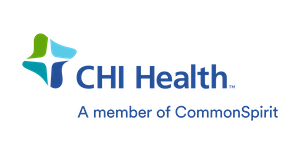Left-Sided Heart Failure
When the heart pumps, it moves oxygen-rich blood from the lungs to the left atrium, and then into the left ventricle, which pumps it throughout the body.
Because the left ventricle provides most of the heart's pumping power, it's larger than the other chambers and vital for normal function. In left-sided or left ventricular (LV) heart failure, the left side of the heart must work harder to pump the same amount of blood.
There are two types of left-sided heart failure.
- Heart failure with reduced ejection fraction (previously called systolic heart failure): When the heart muscle contracts or beats, it pumps blood out of the heart. In systolic failure, the left ventricle loses its ability to contract normally. The heart can't pump with enough force to push enough blood into circulation.
- Heart failure with preserved ejection fraction (previously called diastolic heart failure): The heart relaxes between beats, allowing blood to fill up its chambers. In diastolic failure, the left ventricle loses its ability to relax normally and the muscle becomes stiff. The heart can't properly fill with blood during the resting period between each beat.
Right-Sided Heart Failure
The right side of the heart pumps "used" blood that returns to the heart through the veins through the right atrium and into the right lower chamber (ventricle). The right ventricle then pumps the blood back out of the heart into the lungs where it picks up oxygen.
Right-sided or right ventricular (RV) heart failure usually occurs as a result of left-sided failure or high pressures in the pulmonary artery that transfers the blood from the right side of the heart to the lung (pulmonary hypertension). When the left ventricle fails, increased fluid pressure is, in effect, transferred back through the lungs and can damage the heart's right side. When the right side loses pumping power, blood backs up in the body's veins. This usually causes swelling in the legs and ankles (edema).
Congestion in Heart Failure
As the heart's pumping becomes less effective, it works harder. The heart muscle becomes enlarged. The kidneys receive less blood and compensate by filtering less fluid, salt and waste out of circulation and into the urine.
Excess fluid in the blood increases the volume of blood, causing blood pressure to increase. Fluid may build up in the lungs, liver, gastrointestinal tract, and the arms and legs. This is called fluid "congestion" and for this reason doctors call this "congestive heart failure". As blood pressure increases, it can damage the blood vessels of the heart and kidneys and those throughout the body.
Hypertrophic Cardiomyopathy (HCM)
Hypertrophic cardiomyopathy (HCM) is a common inherited heart condition affecting the heart muscle. It's characterized by thickening of the heart muscle, particularly the left ventricle (the heart's main pumping chamber). This thickening can make it harder for the heart to pump blood effectively, leading to a range of symptoms and potential complications. Learn more about HCM.

